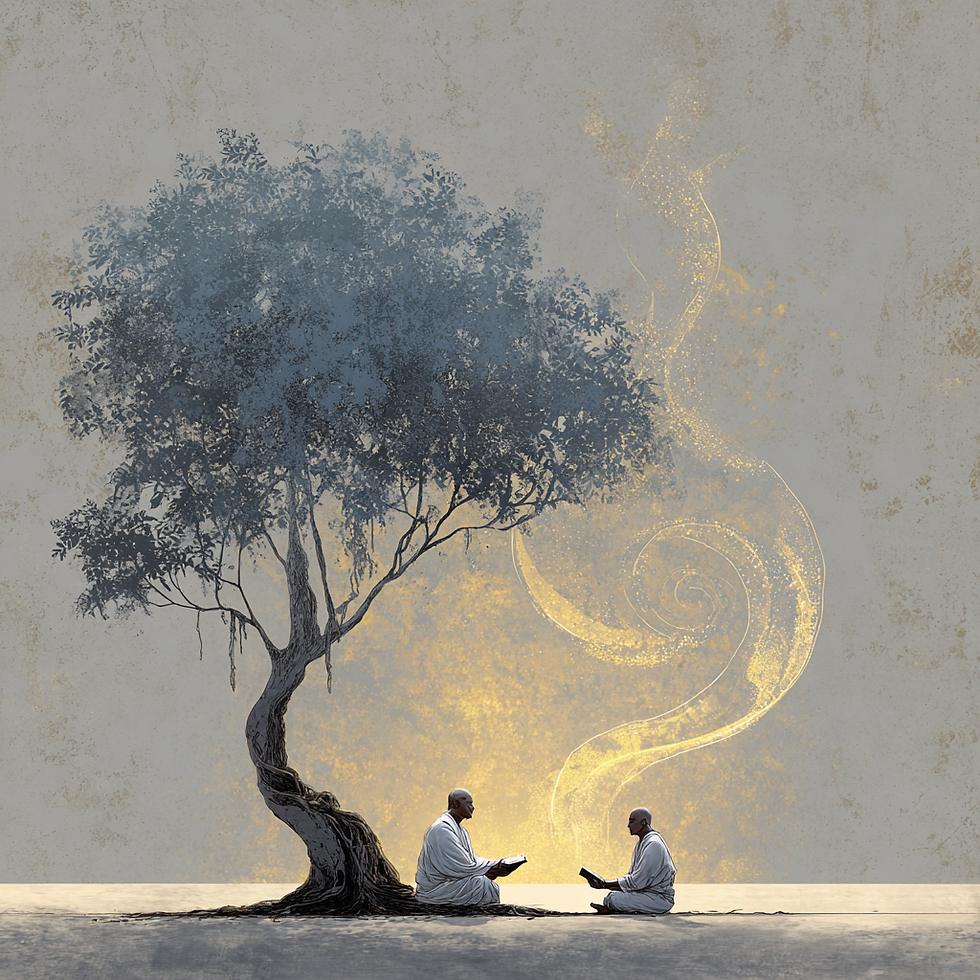The Limit of Knowing: On the Inscrutability of Maya
- Daniel McKenzie

- Oct 26
- 3 min read

Every system of knowledge has a boundary. Science stops where measurement ends; philosophy halts where logic dissolves; religion bows before faith. Vedanta, often mistaken for an all-explaining philosophy, is actually a method for freedom — and it too has a line it cannot cross.
That line is called maya — the mystery by which the limitless appears limited, the changeless appears to move, and the one Self seems to fracture into a universe of minds and matter. Maya is the hinge on which the whole teaching turns, and yet, it is also the veil that prevents total understanding.
When asked to define it, the sages could only say: anirvachaniya — “indefinable.” It cannot be said to exist, because it vanishes upon realization; nor can it be said not to exist, because the world, though illusory, is experienced. It is neither real nor unreal, but an appearance sustained by ignorance.
The Nature of the Enigma
To ask “What is maya?” is already to be ensnared by it. For the mind that inquires is itself a product of maya. The moment we ask “Why does Brahman appear as the world?”, we assume a standpoint within the appearance, looking at the appearance, seeking a cause. But as Gaudapada reminds us, “Those who seek cause and effect within the dream remain dreamers still.”
It is like a wave asking why the ocean moves — unaware that the question itself is part of the movement. The dreamer cannot stand outside the dream to explain it. To do so would require a position outside maya — and only Brahman, the non-dual reality, is outside maya. But Brahman, being non-dual, has no “outside.” Thus the inquiry reaches a luminous impasse: to know maya is to transcend it, and to transcend it is to see that there was never any maya to know.
Why the Mind Cannot Know the Cause
The human mind, however subtle, operates in duality: subject and object, knower and known. It can only function where difference exists. But maya is the very principle that creates difference — it is the mirror that makes reflection possible. The mind trying to understand maya is like the reflection trying to see the mirror. It cannot, because it is the mirror’s play.
This is why Vedanta stops at maya. Not from ignorance or lack of courage, but from honesty. The intellect is an instrument of the phenomenal world, and cannot leap beyond the phenomenal to comprehend its own ground. When the sages say maya is inscrutable, they are not evading the question — they are pointing to the futility of the question itself.
Freedom Beyond Knowledge
Vedanta therefore shifts the goal from omniscience to liberation. The aim is not to understand the illusion, but to wake up from it. This is the turning point in the seeker’s journey: when knowledge becomes wisdom, and the intellect yields to insight.
Freedom (moksha) is not gained by explaining maya, but by seeing through it. The world does not need to vanish; it only needs to be known for what it is — a shimmering appearance in consciousness. When the knower ceases to seek, awareness stands revealed as the only reality.
As Shankara writes, “When the rope is known, the snake ceases — yet nothing has changed but knowledge.” The point is not to untangle the illusion, but to see that it never bound you in the first place.
The Silence of the Sage
This is why the final teaching is silence. After all analysis, after all scripture, there remains a hush — not of ignorance, but of completion. The sage does not explain maya; he abides free of its spell. To him, the world continues to appear — but it no longer deceives.
The mind may still wonder, “But how does illusion arise?” The sage only smiles, for he knows the question belongs to the dream. In his silence, the question itself dissolves. What remains is not an answer, but peace — the stillness of the Self that was never touched by illusion, never bound by time, never divided by thought.


